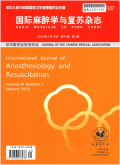摘要髂筋膜间隙阻滞(fascia iliaca compartment block, FICB)依靠局部麻醉药在髂筋膜间隙内扩散到股神经、股外侧皮神经、闭孔神经从而实现其支配区域的镇痛。超声引导下FICB在髋关节置换、膝关节置换、股骨近端骨折及髌骨骨折等手术中应用广泛。为了明确髂筋膜间隙的解剖、注射局部麻醉药后药液的扩散方式与范围,以及临床效果,文章对FICB解剖和药液扩散程度、技术改良和临床效果进行了综述。腹股沟韧带上FICB相比较经典FICB和股神经阻滞,扩散范围更广、效果更佳。未来尚需要进一步研究不同入路FICB后药液弥散至椎旁间隙规律。
更多相关知识
abstractsFascia iliaca compartment block (FICB) relies on the diffusion of local anesthetics into the femoral nerve, lateral femoral cutaneous nerve, and obturator nerve in the fascia iliaca space to achieve analgesia in its innervated area. Ultrasound-guided FICB is widely used in hip and knee arthroplasty, femoral fracture and patellar fracture. In order to clarify the anatomy of the fascia iliaca compartment, the diffusion mode, range of the drug solution after injection of local anesthetics, and the clinical effects of FICB, this article reviews the anatomy of FICB and the degree of drug solution diffusion, technical improvements, and clinical effects of FICB. Compared with classic FICB and femoral nerve block, suprainguinal FICB has wider spread range and better effect. In the future, it is still necessary to further study the regularity of drug solution diffusion into the paravertebral space after FICB by different approaches.
More相关知识
- 浏览0
- 被引41
- 下载0


相似文献
- 中文期刊
- 外文期刊
- 学位论文
- 会议论文



 换一批
换一批 换一批
换一批



